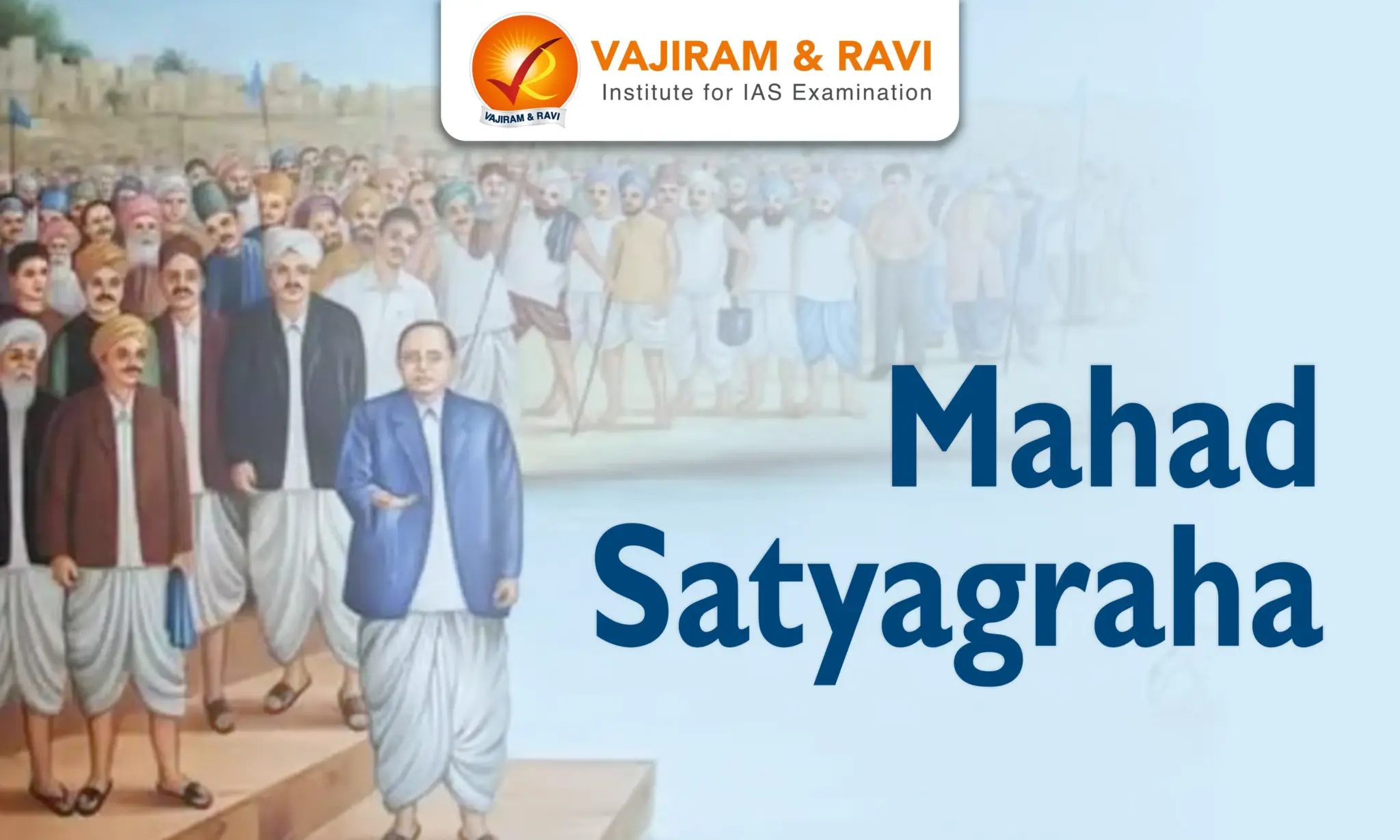Hindustan Aeronautics Limited (HAL) is a prominent Indian public sector aerospace and defence company headquartered in Bangalore. Established in 1940, HAL is distinguished as one of the oldest and largest aerospace and defence manufacturers globally. Presently, HAL operates 11 dedicated Research and Development (R&D) centres and 21 manufacturing divisions across four production units spread throughout India.
It is managed by a board of directors appointed by the President of India , acting through the Ministry of Defence, Government of India.
Evolution of HAL
Hindustan Aeronautics Limited (HAL), established in Bangalore on December 23, 1940, by Shri Walchand Hirachand in collaboration with the Government of Mysore, HAL’s primary objective was the indigenous production of aircraft.
- Early Years of HAL: In 1942, the Government of India became a shareholder, eventually assuming full management control.
- It saw collaborations with global aeronautical companies, resulting in the production of iconic aircraft like the Harlow Trainer, Curtiss Hawk Fighter, and Vultee Bomber.
- These ventures laid the foundation for India’s aeronautics sector.
- Innovations and Diversification: Innovation remained a cornerstone of HAL’s journey, giving rise to several aircraft.
- For example, ‘Pushpak’ for flying clubs, ‘Krishak’ for Air Observatory Post (AOP) role, HF-24 Jet Fighter (‘Marut’), and the HJT-16 Basic Jet Trainer (‘Kiran’).
- Later Developments:
- In the 1960s and 1970s, HAL diversified its operations, leading to the establishment of Aeronautics India Limited (AIL) for the licensed production of MiG-21 aircraft.
- This eventually culminated in the amalgamation of Hindustan Aircraft Limited and Aeronautics India Limited, giving birth to “Hindustan Aeronautics Limited (HAL)” on October 1, 1964.
- HAL’s contributions extended beyond aircraft manufacturing and played an active role in supporting India’s space programs. It established an aerospace division in 1988, which became instrumental in supplying critical components for ISRO’s launch vehicles and satellites.
- HAL ventured into gas turbine engines with the creation of the Industrial & Marine Gas Turbine Division in 1998.
- Recent Developments:
- In recent years, HAL has pushed its boundaries with the establishment of the Light Combat Aircraft (LCA) Tejas Division in 2014, indicating its dedication to indigenous innovation.
- This initiative promises to revolutionize the modernisation efforts of the Indian Defence Services.
- Today, HAL stands as a global leader in the Aerospace and Defence Industry, shaping the future of aviation and bolstering national security.
R&D Centres of HAL
The following are the important centres of HAL known for their respective activities:
| R & D Centre | Activity |
| Aircraft R&D Centre, Bangalore | Design and Development of Fixed Wing aircraft |
| Rotary Wing Aircraft R&D Centre, Bangalore | Design and Development of Rotary Wing aircraft (LCH, LUH, IMRH, RUAV) |
| Mission & Combat Systems R&D Centre, Bangalore | Mission systems, Aircraft upgrades and technology development |
| Aero Engine R&D Centre, Bangalore | Small, Medium Engines & Test Bed Design (HTFE 25 KN, HTSE 1200 KW) |
| Transport Aircraft R&D Centre, Kanpur | Development & Modification/ upgrades of Transport Aircraft |
| Aircraft Upgrades R&D Centre, Nasik | Aircraft/ System Upgrade Work on Russian Aircraft |
| Aerospace Systems & Equipment R&D Centre, Lucknow | Development of Mechanical, Hydraulic and Electrical accessories. |
| Gas Turbine R&D Centre, Koraput | Design Improvement of Russian Engines |
| Central Materials & Processes Laboratory & NDT Centre, Bangalore | Development of Materials, Castings, Forgings & New Processes |
| Aerospace Systems & Equipment R&D Centre, Korwa | Developing Flight Data Recorders & Display Systems. |
Contribution of HAL in India’s Defence Sector
Following are the important projects and contributions of Hindustan Aeronautics Limited (HAL) in India’s Defence Sector:
| Light Combat Aircraft (LCA) | This is India’s first domestically designed and manufactured supersonic fighter aircraft. For example: Tejas.
 |
| Light Combat Helicopter (LCH) | The LCH is another indigenous project aimed at meeting the combat helicopter requirements of the Indian Armed Forces. For example: Dhruv, Prachand (an improvement on previous helicopters).
 |
| Basic Turboprop Trainer HTT-40 | The HTT-40 is a trainer aircraft designed to meet the basic training requirements of the Indian Air Force. |
| Indian Multi-Role Helicopter (IMRH) | – It is focused on designing and manufacturing a versatile and multi-role helicopter for various defence and civilian applications. For example, HLFT-42.
IMRH is expected to replace the ageing fleets of Russia-origin military helicopters (Mi-17s).  |
| Jaguar DARIN-III Upgrade | This project involves upgrading the existing Jaguar aircraft to the DARIN-III standard, enhancing their operational capabilities.
|
| Mirage Upgrade | This project involves modernizing the Mirage aircraft to enhance their performance and extend their operational lifespan.
|
| Hawk-i | It is an upgraded version of the Hawk Advanced Jet Trainer to provide trainee pilots with a more realistic and comprehensive training experience.
|
| Aircraft Display Systems | These advanced Aircraft Display Systems play a crucial role in providing pilots with essential information during flight. |
| Mission Computers | These are critical components in modern aircraft for processing and managing mission-critical data. |
Future Projects of HAL
HAL is shifting its focus from licensed production to the development of its own indigenous products. This includes the Tejas fighter aircraft, various types of helicopters, and the design and development of new helicopters and fighter aircraft. These projects are expected to provide a strong pipeline of work for HAL until the end of the decade.
- Tejas Aircraft: It received clearance for induction into the Indian Air Force in 2019, which represents a major milestone for HAL.
- The company is set to deliver the remaining eight of the 40 Tejas aircraft ordered by the Indian Air Force.
- HAL has planned to manufacture 83 Tejas Mk 1A aircraft, with an ambitious target of inducting the Tejas Mk2 by 2028.
- Helicopters: HAL has developed helicopters such as Dhruv, Rudra, and Prachand.
- The Prachand helicopter is expected to replace the ageing Cheetah and Chetak helicopters.
- Collaborations: HAL is actively pursuing collaborations with foreign original equipment manufacturers (OEMs) to enhance its capabilities and technology base.
- Initiatives like the Combat Air Teaming System (CATS), which combines manned and unmanned aircraft, showcase HAL’s commitment to innovation in future.
Global Collaborations of HAL
Hindustan Aeronautics Limited (HAL) has signed several MoUs and agreements with Global Aerospace firms, such as
- MoU with Argentina: A memorandum of understanding with its Argentina counterpart Fabrica Argentina de Aviones (FAdeA) for possible collaboration in the aerospace sector.
- HAL is in talks with Argentina to export the indigenously-built light combataircraft (LCA) amid India’s push to gain a toehold in foreign defence markets.
- MoU with the USA: GE and HAL signed a memorandum of understanding in Washington to produce 99 F414 engines for India’s light combat aircraft (LCA) Mk-2 program.
- The deal involves an 80% transfer of technology (ToT) and is estimated to be worth around $1 billion.
- MoU with France: HAL and Safran Aircraft Engines (French aerospace company) signed a MoU to develop industrial cooperation in Ring forging manufacturing for commercial engines.
- HAL will produce a LEAP (Leading Edge Aviation Propulsion) engine in Bengaluru as part of the MoU.
Challenges associated with HAL
HAL face a number of challenges that hinder its efficiency and performance.
- Financial constraints: It is impaired by cost overruns and payment delays, hindering HAL’s operations.
- Since the Government of India is a major client of HAL, there are some instances of inter-departmental delays in the payment of HAL’s products.
- Technological Gaps: HAL needs to keep pace with rapidly evolving aerospace technologies like the manufacturing of GE Aerospace’s F414 engines can be challenging.
- Significant investments are required to bridge these gaps in research and development.
- Delays in Project Execution: HAL faced unforeseen delays in project execution due to the unavailability of the originally planned materials.
- This resulted in the production of the Aircraft Engine using substitute materials, ultimately leading to its failure.
- Procurement Procedures: The procurement of the originally planned materials through complex procurement processes, especially for critical components, can be time-consuming.
- Global Competition: HAL operates in a competitive global market. Maintaining a competitive edge over its competitors, like Boeing, Lockheed Martin, etc., demands constant innovation and cost-effective solutions.
- In October 2023, HAL lost to the Korean firm for the export of 18 fighter jets to Malaysia. It was a huge setback for the firm.
Measures to be taken in Future
The following are the steps that can be taken to enhance the efficiency of HAL:
- Focus on R&D: There is a need to continuously invest to facilitate the development of state-of-the-art technology and innovative solutions.
- Private sector involvement can be a game-changer in this area.
- Collaborations: Through building more partnerships with international aerospace firms like Dassault Aviation, Boeing, etc., HAL can be facilitated by technology transfer and knowledge exchange.
- This would also enhance the overall professionalism and efficiency within the organisation.
- Academic research:
- There should be an inculcation of the curriculum of Defence Technology in the premier institutes like IITs, NITs, etc.
- There is a need to have dedicated institutes for Defence Technology just as there is IIST for Space Technology.
- Diversification of Portfolio: There is a need to explore opportunities in emerging areas like space technology and unmanned aerial vehicles (UAVs) that can expand HAL’s portfolio.
- The market for drones (UAVs) is expanding across the world, which can provide HAL with an opportunity to establish its presence.
- Global Market Expansion: Increasing exports and actively pursuing export opportunities for HAL’s products and services can increase revenues for HAL.
- For example, Argentina, Egypt, and the Philippines showed interest in HAL’s Light Combat Aircraft (LCA) Tejas.
Last updated on August, 2025
→ UPSC Mains Admit Card 2025 has been released on 14th August at www.upsc.gov.in.
→ UPSC Mains 2025 will be conducted on 22nd August 2025.
→ UPSC Notification 2025 was released on 22nd January 2025.
→ UPSC Calendar 2026 is released on 15th May, 2025.
→ UPSC Prelims Question Paper 2025 and Unofficial Prelims Answer Key 2025 are available now.
→ UPSC Prelims Result 2025 is out now for the CSE held on 25 May 2025.
→ The UPSC Vacancy 2025 were released 1129, out of which 979 were for UPSC CSE and remaining 150 are for UPSC IFoS.
→ UPSC Prelims 2026 will be conducted on 24th May, 2026 & UPSC Mains 2026 will be conducted on 21st August 2026.
→ The UPSC Selection Process is of 3 stages-Prelims, Mains and Interview.
→ UPSC Result 2024 is released with latest UPSC Marksheet 2024. Check Now!
→ UPSC Toppers List 2024 is released now. Shakti Dubey is UPSC AIR 1 2024 Topper.
→ Also check Best IAS Coaching in Delhi




















